How to Plan a Trip to Japan: 8 Tips
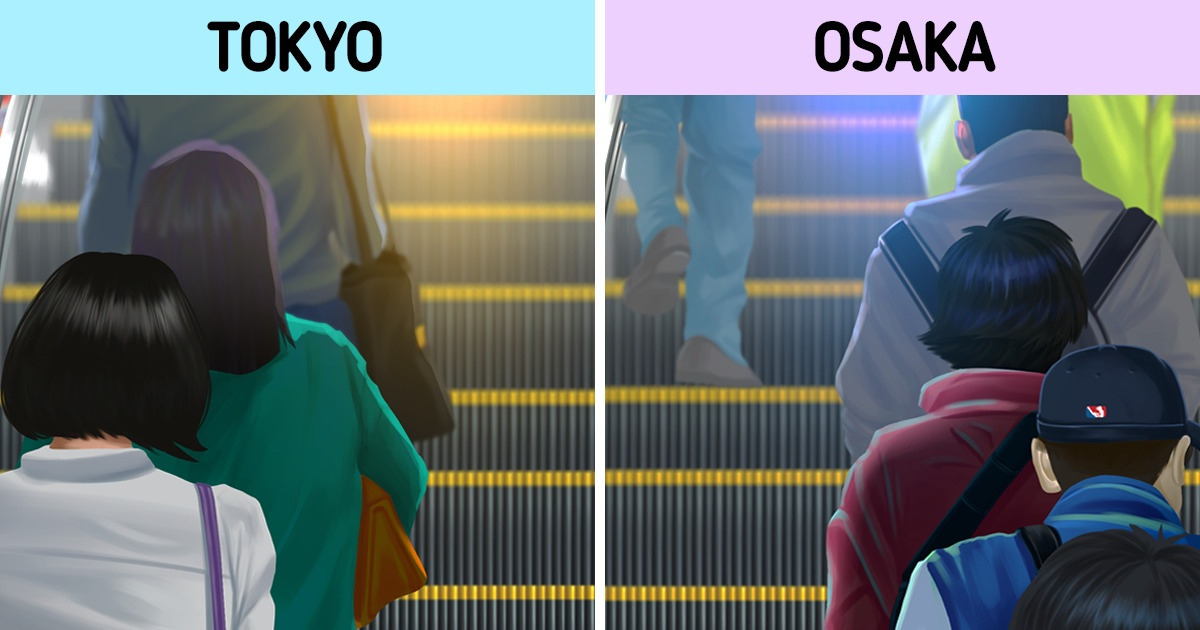
Japan is a welcoming country. Its residents are among the most polite people you’ll ever meet, and Japan has many tourist attractions and natural wonders worth visiting.
To help you make the most during your visit, 5-Minute Crafts has created a list of 7 tips on how to plan your trip to Japan.
1. Decide when to go to Japan.
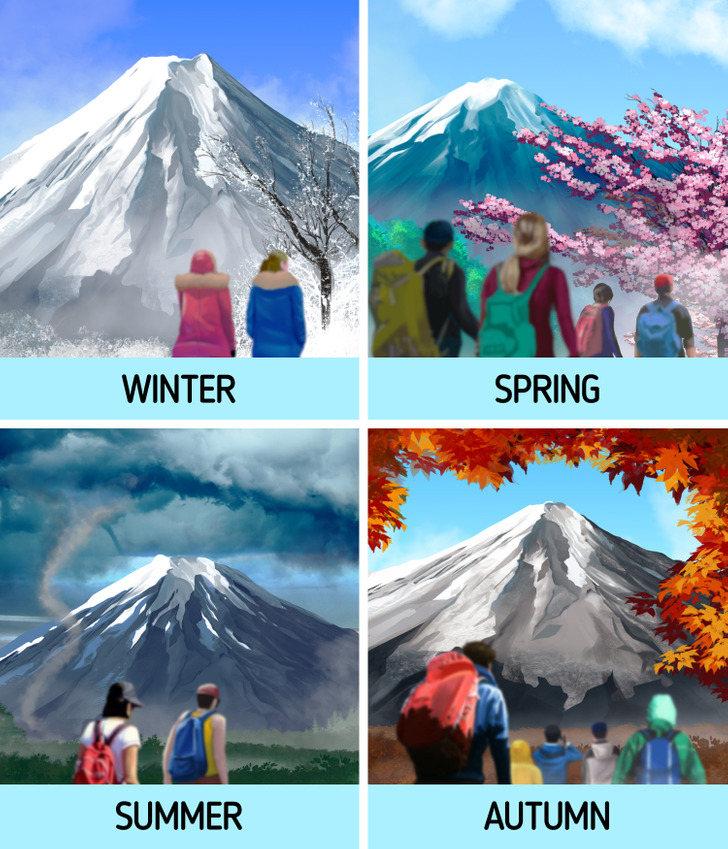
Every season has pros and cons, and the best time for you to visit Japan depends on what you plan to do. And here’s a short breakdown:
- Winter: It’s dry and cold outside, but it rarely goes below the freezing point except in the northernmost parts of the country. Moreover, winter is mild in Southern Japan. Still, you won’t see many local or foreign tourists around unless you go skiing. Thus, you’d benefit from affordable accommodation rates and low crowds at tourist attractions. Plus, you are most likely to see Mount Fuji, one of the most famous natural landmarks in Japan, clearly from a distance.
- Spring: The weather is nice and warm throughout the country, in general. Furthermore, spring is a high season in Japan, with many tourists coming to experience the famous cherry blossoms. Tourist-related expenses are at their highest, and booking accommodations are recommended several, even 12 months in advance.
- Summer: It’s hot, rainy, and humid outside, with air temperatures reaching higher than 77°F (25°C), but tourist crowds are low. This season is ideal for beach-hopping, but note that summer is typhoon season in Japan, so stay alert. Seeing Mount Fuji from the distance tends to be difficult due to the cloud cover. But you can climb the mountain from early July to early September.
- Autumn: It becomes cool and dry after the summer heat and rainfall in Japan. By the end of autumn, air temperatures are typically just below 50°F (10°C). Many travelers come to Japan to admire the autumn colors, but there tend to be fewer than in spring. As a result, tourist-related expenses are high.
2. Check if you need a tourist visa.
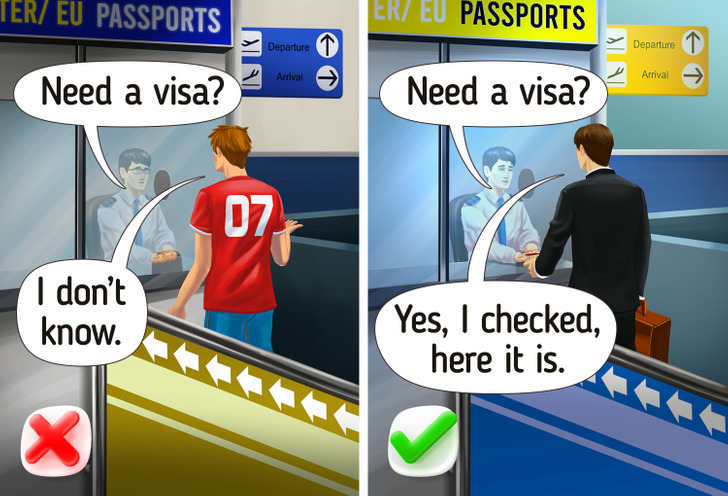
Foreign travelers coming from 68 countries don’t need a visa for short-term trips, which means up to 90 days. Most European countries, including the US, Australia, Singapore, and Hong Kong, are typically among visa-exempt countries.
Nationals of some countries, such as Brunei, Indonesia, and Saudi Arabia, may stay in Japan visa-free for up to 15 or 30 days. To learn whether you need to obtain a visa before a trip, check out the Japanese Ministry of Foreign Affairs website.
3. Learn basic Japanese words and phrases.
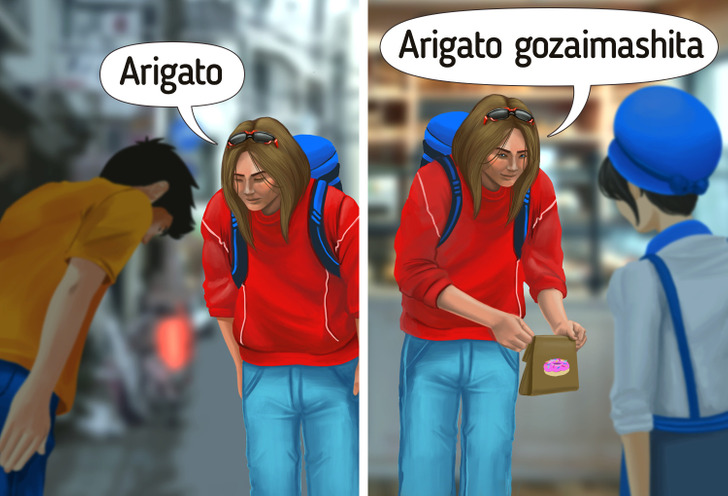
Greeting locals and communicating with them in their language is appreciated everywhere, including Japan. That doesn’t mean that you have to learn Japanese before your trip. An occasional word or a phrase would do. And these are some basic Japanese words and phrases you will likely need while visiting Japan:
- Hello = konnichiwa (こんにちは)
- Please = onegai shi-masu (おねがいします)
- Excuse me. = sumimasen (すみません).
- Yes, exactly. = sō desu (そうです).
- No, that’s not right. = chigai-masu (ちがいます).
- Thank you = arigato (ありがとう), when thanking someone in a casual manner
- Thank you = arigato gozaimashita (ありがとうございました), when leaving after you’ve received a service or something in a store or elsewhere
- Which way? = docchi (どっち)?
- Where is the train station? = densha no eki wa doko desu ka? (電車の駅はどこですか) ?
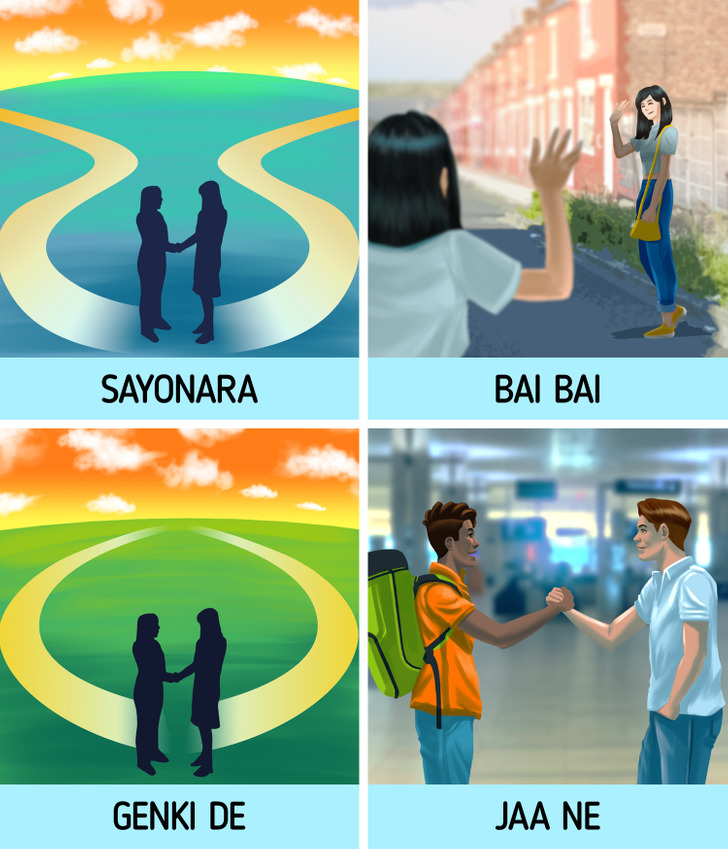
Note that saying goodbye may differ in Japan from the rest of the world. It depends on various circumstances, such as the relationship between people and whether they are at work or not. And here are a few ways to say goodbye in Japan as a traveler:
- Sayonara (さようなら ) is for when you won’t see the person again.
- Bai bai (バイバイ) is usually used between young people, especially girls.
- Genki de (元気で) is the “all the best” equivalent used when you don’t expect to see the person for a long time.
- Jaa ne (じゃあね) is used between friends.
4. Buy a Japan rail pass (optional).
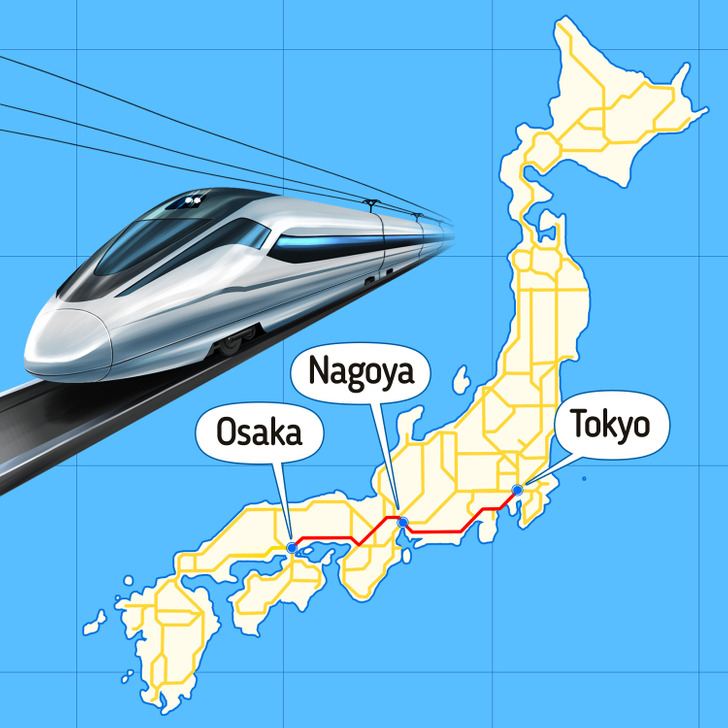
If you plan to travel throughout the country, consider purchasing a Japan rail pass since the railway is best for getting around for various reasons. Since this pass is available only for foreign travelers, you need to book it online in advance. It is a multi-use ticket valid for the Shinkansen bullet and Narita Express trains.
You can opt for 7, 14, or 21-day passes. With the Japan rail pass, you don’t need to book seats in advance. All you have to do is show the pass to enter the chosen train.
Note: Nozomi Shinkansen trains, which have fewer stops and, thus, travel faster, aren’t covered with the Japan rail pass. So you’d need to pay a full-fare individual ticket to use these bullet trains.
5. Purchase travel insurance.

Buying travel insurance is highly recommended when traveling to Japan. Since healthcare services are expensive, you should insure yourself to avoid paying high bills if anything happens during your trip.
6. Have cash at hand.
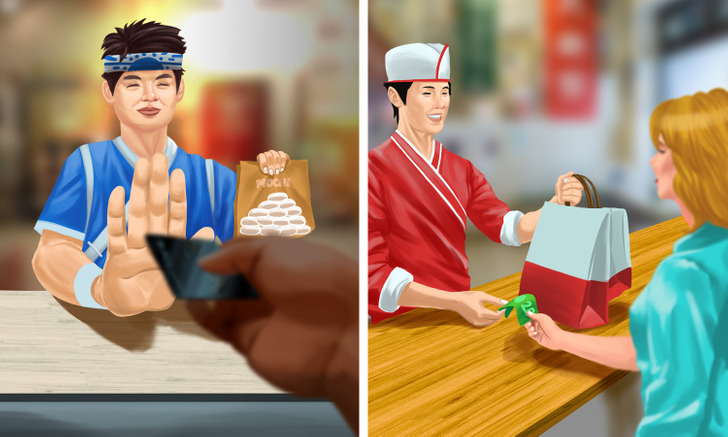
Japan is a cash-driven country, and albeit some big businesses accept credit and debit cards, most of them take only cash. If you need to withdraw money, use a Seven Bank or postal ATMs. These ATMs, unlike most others, accept cards issued in foreign countries, such as Visa, Maestro, MasterCard, and American Express.
Note: Keep in mind that only Seven Bank’s ATMs are available 24/7, while the only postal ATMs that offer 24/7 service are located in central offices in major cities, such as Tokyo and Kyoto, for example.
7. Plan to visit top attractions in Japan.
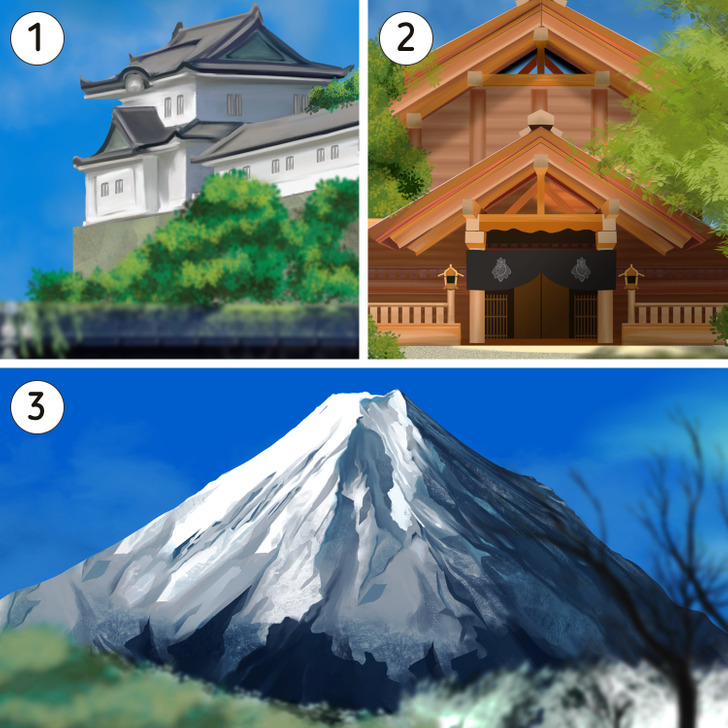
Some of the most-visited attractions in Japan are:
- Tokyo Imperial Palace (1), surrounded by massive walls and moats, is among the top Japanese attractions. Its highlights are Nijubashi Bridge and East Higashi-Gyoen Garden.
- Atsuta Shrine (2), located in downtown Nagoya, is the most significant Shinto shrine in the country. Another city highlight is Nagoya Castle, featuring the 157-ft-high (48 meters) main tower.
- Mount Fuji (3) is Japan’s highest mountain and one of its most photogenic landmarks. You can choose to climb the mountain in summer to admire the surrounding countryside. In other seasons, you can only take photos of Mount Fuji from a distance.
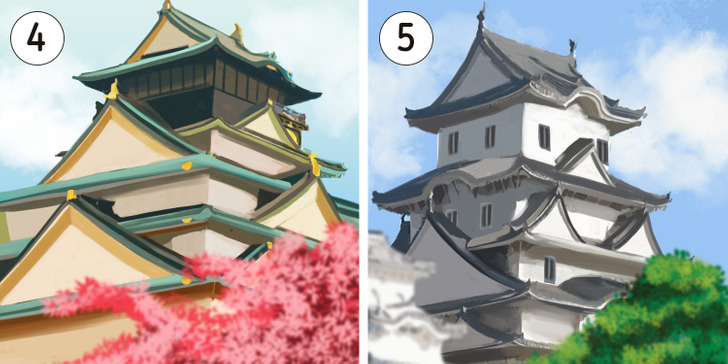
- Osaka Castle (4) is an exact copy of a castle that was originally built in 1586. It introduces the history of the castle and Osaka.
- Himeji Castle (5), located a short train ride west of Osaka, is a hilltop fortress and one of the most scenic castles in Japan. Dominating over the lush countryside, the gleaming white castle is a world heritage site consisting of 83 structures and defense systems.
8. Learn the local habits.
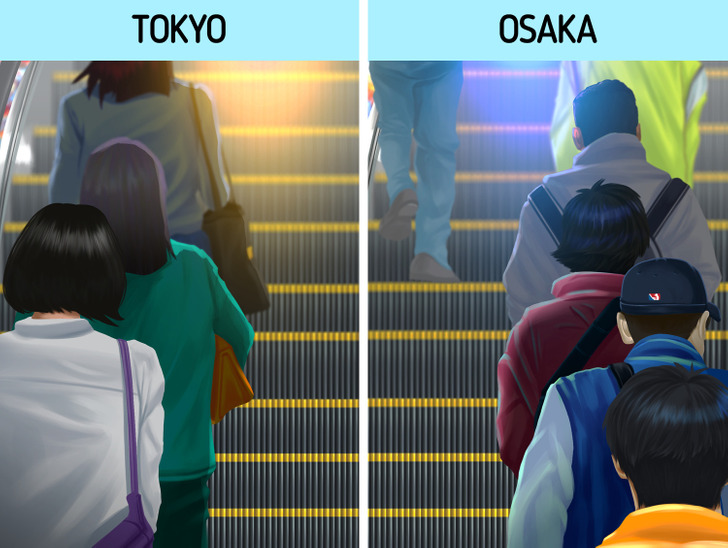
You should learn some local customs before visiting Japan:
- Pay attention to the side you stand on when using an escalator. Stand on the left side when you are in Tokyo and on the right side when in Osaka.
- You may be asked to take off your shoes when entering a restaurant, museum, hotel, or some other public facility.
- There’s no tipping in Japan. If you offer a Japanese person extra money, they’re probably going to be confused.
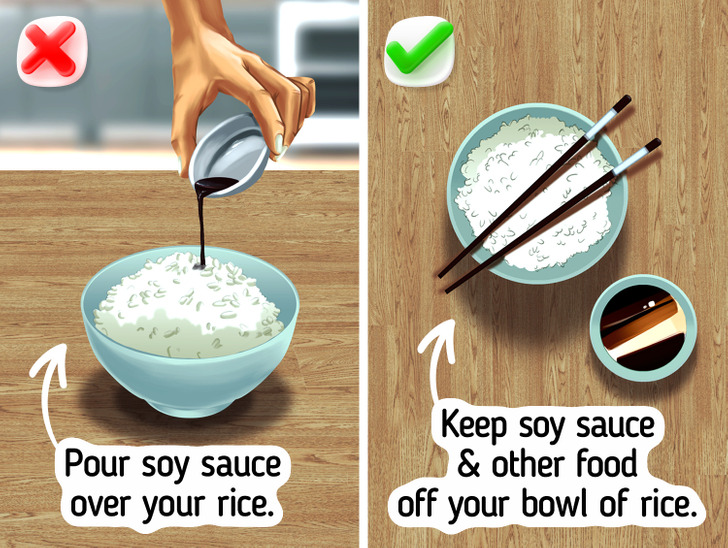
- Never add soy sauce to a bowl of rice in public. Also, don’t leave your meal unfinished.
- Learn how to use chopsticks before your trip since forks and knives won’t be always available.
- Bow when showing someone respect. The more you bow, the more respect you show.